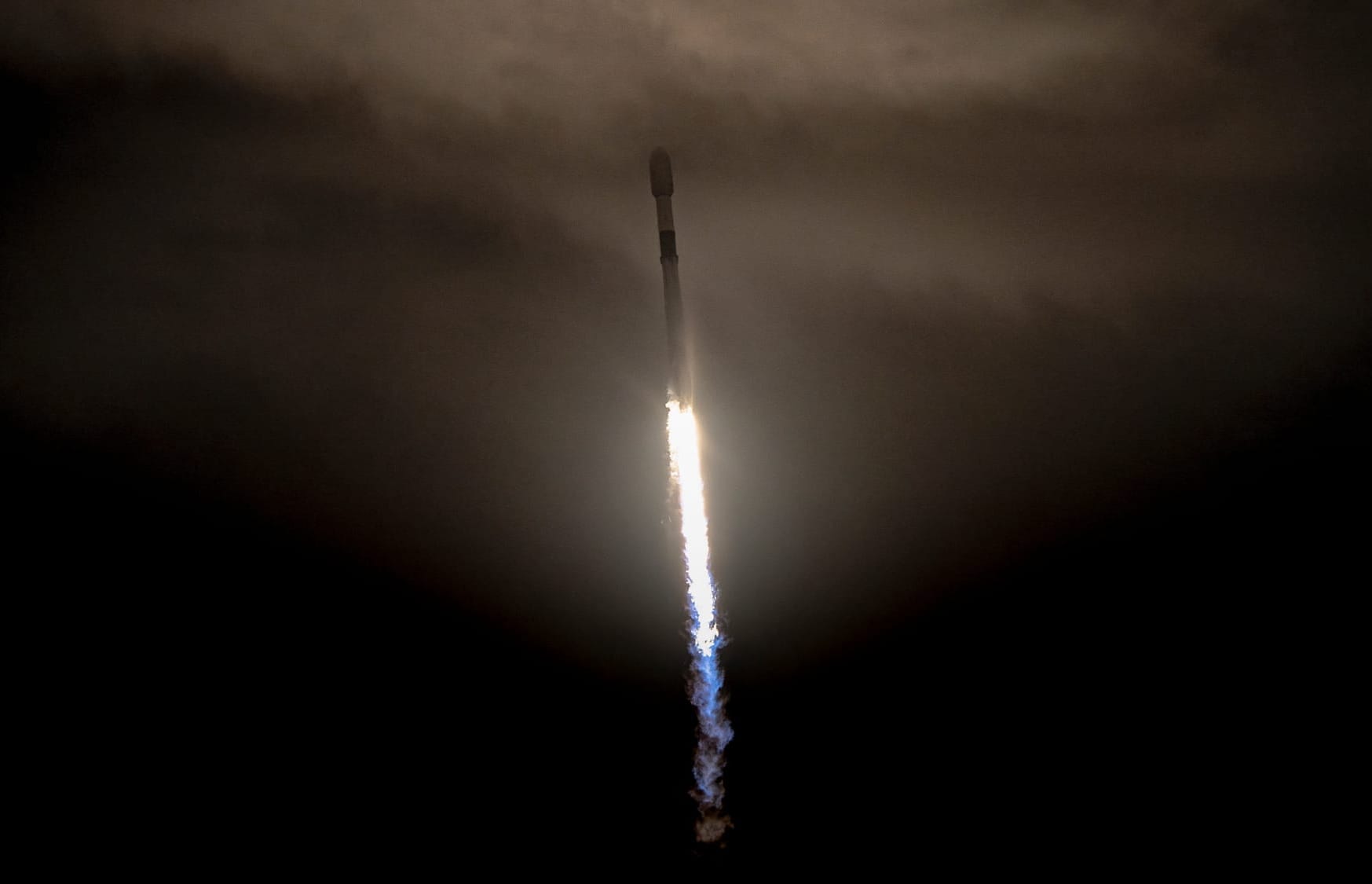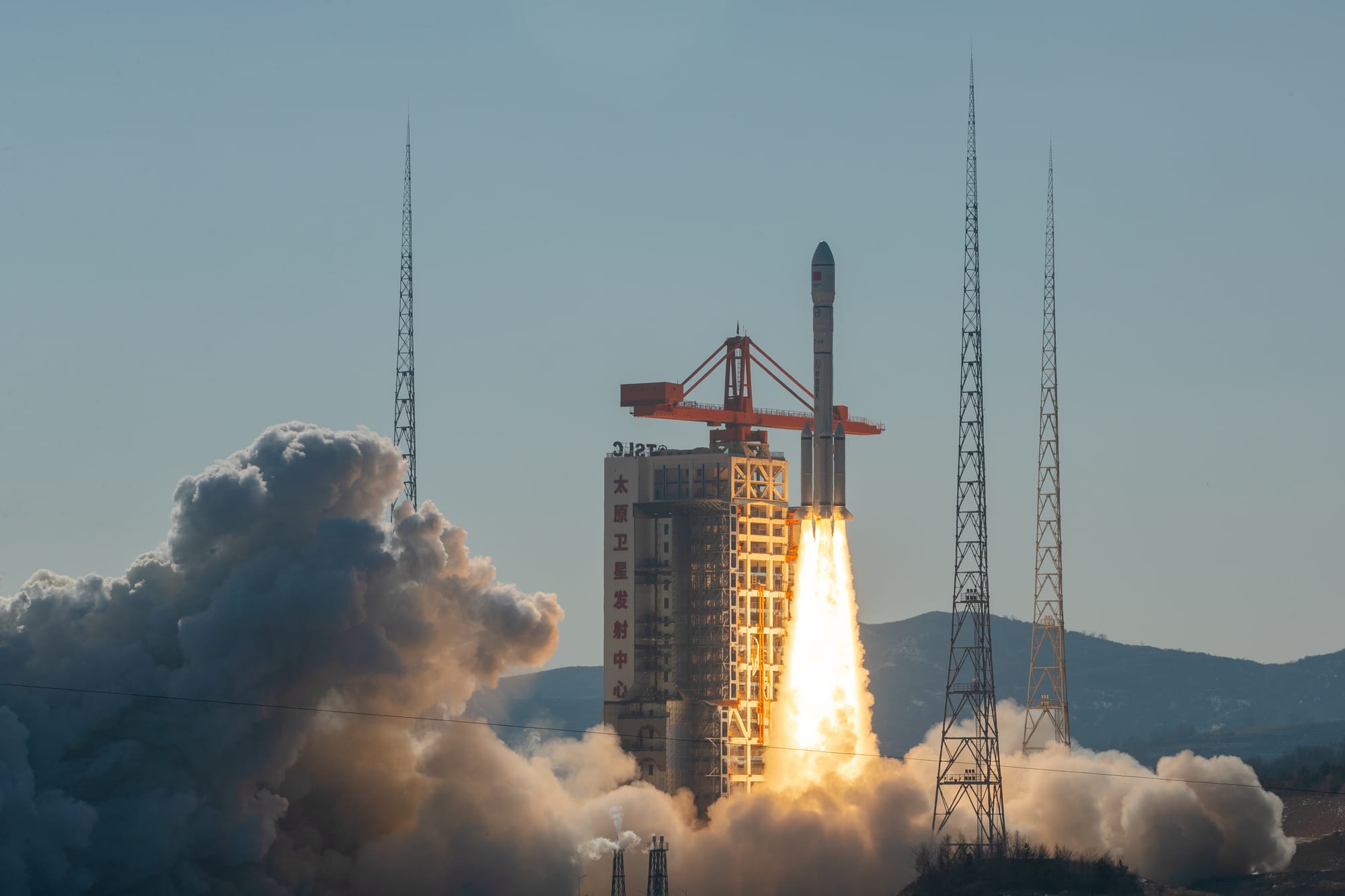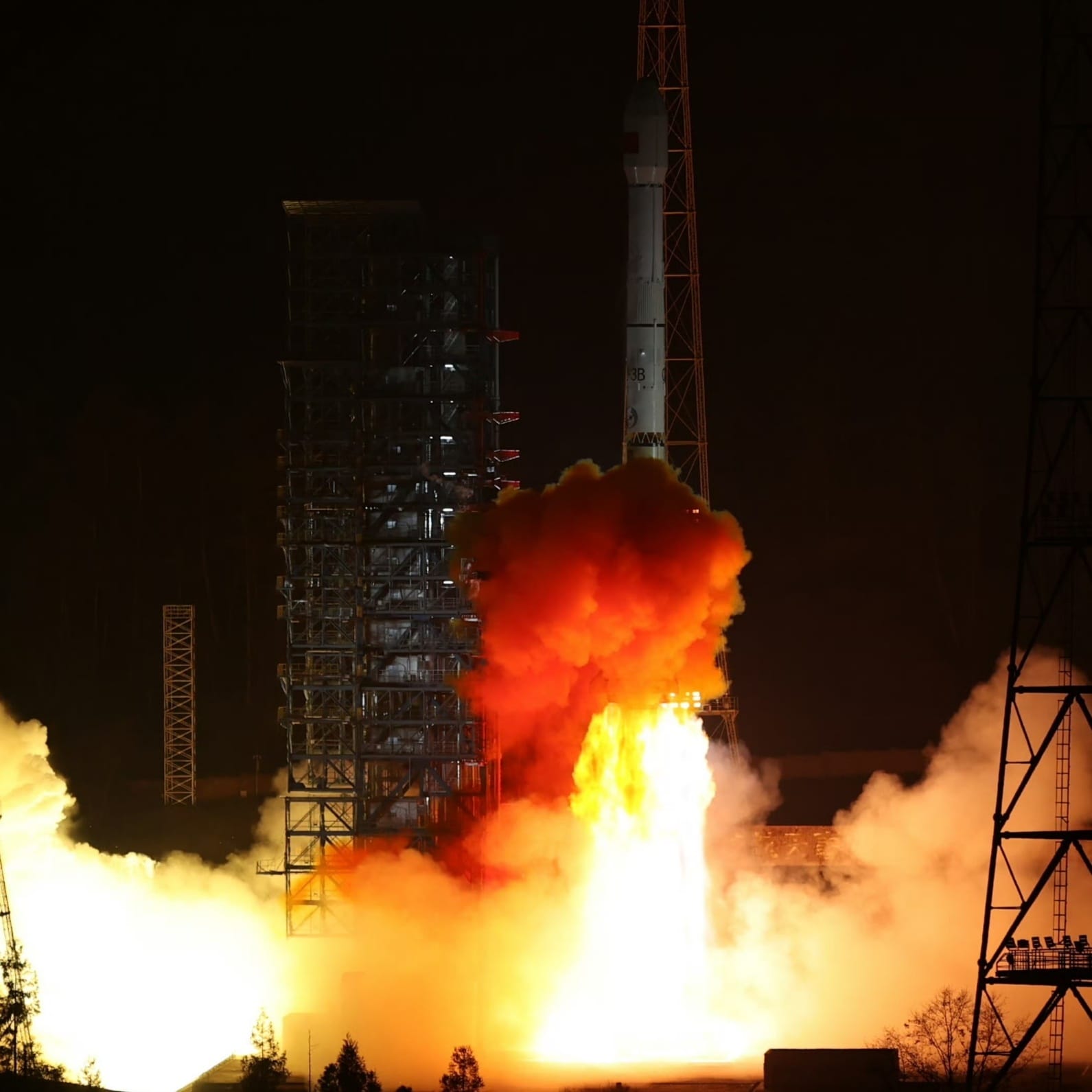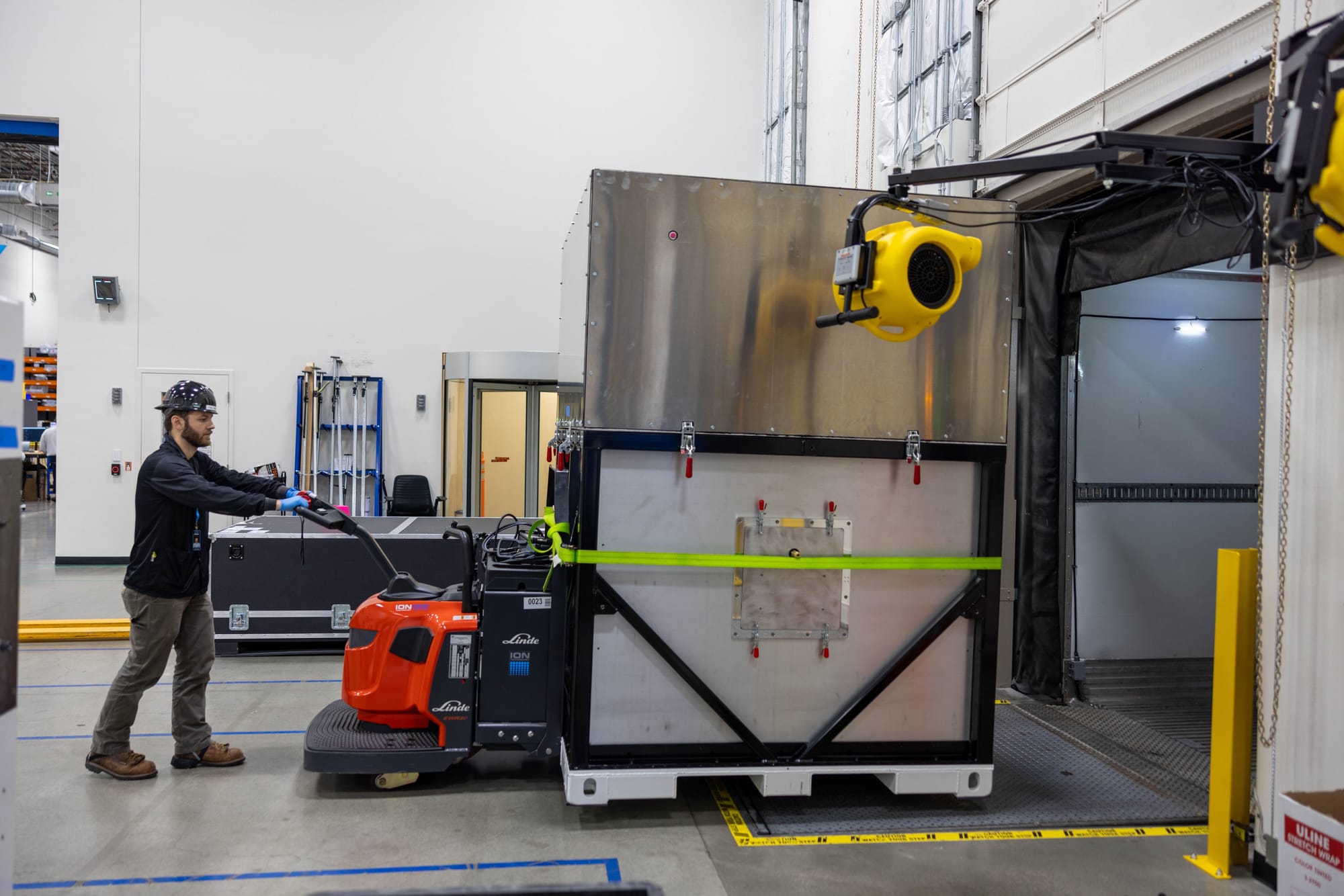Table of Contents
Welcome back to Weekly Dose of Space! This week saw six launches take place, with launches for two mega-constellations. News this week had Amazon's mega-constellation heading to the launch site, another spacewalk aboard the Tiangong Space Station, and Finland singing the Artemis Accords. As always, we'll also look ahead to what the worldwide launch schedule might look like next week.
SpaceX
This week at Starbase began late on January 18th, and early on the 19th, when Ship 34 was transported from the Massey's test site to the production site, after completing a round of cryogenic testing. The following morning on the 20th Starbase's second tower had its catch arms rolled out to the launch site, while teams began constructing a temporary structure for preparing the arms.
A few days later on January 24th one of the two arms was lifted upright and supported by the temporary structure. Then just hours later the second arm was moved upright, followed by the locking of the two arms into one moveable structure.
The 2nd chopstick has been fitted to the carriage and the mahoosive pin, that locks the 3 pieces into 1 set, has been (very easily) dropped into place.@LabPadre pic.twitter.com/5BjIbQQJbN
— VixXi (@VickiCocks15) January 25, 2025
The second arm being lifted and locked, via VickiCocks15 on X.
Launches This Week
January 20th - Ceres-1 with Jitianxing-A-05 & four Yunyao-1 satellites
Galactic Energy launched its Ceres-1 rocket from the Jiuquan Satellite Launch Center carrying Jitianxing-A-05 and four Yunyao-1 satellites to low Earth orbit. Jitianxing-A-05 is an optical remote-sensing satellite part of a planned small constellation and the four Yunyao-1 satellites, numbered 37 through 40, are part of Yunyao Aerospace’s meteorology constellation.

January 21st - Falcon 9 with Starlink Group 13-1
Falcon 9 lifted off from Launch Complex 39A, in Florida, carrying twenty-one Starlink satellites to low Earth orbit. The booster supporting this mission was B1083 for its eighth mission, with a landing on the drone ship 'A Shortfall Of Gravitas' downrange.

January 21st - Falcon 9 with Starlink Group 11-8
Another Falcon 9 launched from Space Launch Complex 4E, in California, carrying twenty-seven Starlink satellites into low Earth orbit. Supporting this mission was booster B1082, flying for the tenth time and landing downrange on the drone ship 'Of Course I Still Love You'.
Falcon lands for the 400th time! pic.twitter.com/pwNCwAb3SK
— SpaceX (@SpaceX) January 21, 2025
Falcon 9 booster B1082 landing on 'Of Course I Stil Love You', via SpaceX on X.
January 23rd - Long March 6A with Qianfan Polar Group 06
A Long March 6A blasted off from Launch Complex 9A at the Taiyuan Satellite Launch Center carrying eighteen Qianfan satellites into low Earth orbit, for the fourth launch of the constellation. With the launch of Polar Group 06 the Qianfan constellation now has seventy-two satellites in orbit.

January 23rd - Long March 3B/E with TJSW-14
A Long March 3B/E lifted off from Launch Complex 2 at the Xichang Satellite Launch Center carrying the TJSW-14 satellite to a geostationary transfer orbit. TJSW-14's uses may include satellite communications, radio, television, data transmission, as well as technology testing and verification.
Sadly either the first-stage or booster, it is unknown which at this time, fell close to a residential area at roughly 23:50 pm local time. As is standard after booster-related incidents, nearby residents were asked to shelter outside and away from the debris. Meanwhile, teams closed off and cleaned up the debris shortly after.

January 24th - Falcon 9 with Starlink Group 11-6
SpaceX launched a Falcon 9 to low Earth orbit from Space Launch Complex 4E carrying twenty-three Starlink satellites. Booster B1063 supported this launch for its twenty-thrid mission, with a landing on the drone ship 'Of Course I Still Love You' downrange.

In Other Space News
First Kuiper satellites head to Florida

Amazon announced on January 24th that it had shipped a batch of Kuiper satellites from one of its facilities to Cape Canaveral, Florida, ahead of the constellation's first launch later this year. In the announcement, Amazon stated:
"Project Kuiper update! Another batch of production satellites for our low Earth orbit internet constellation is on its way to Cape Canaveral, FL. These satellites, built to withstand the harsh conditions of space and the journey there, will be processed upon arrival to get them ready for launch."
"Before shipping these satellites, we put each one through a series of tests that include:
Performance testing in a vacuum chamber to replicate outer space.
Vibration and acoustic testing to simulate rocket launch conditions.
Thermal heating and cooling cycles that simulate temperature changes the satellites will experience in space."
"These satellites will bring fast, reliable internet to customers even in remote areas. Stay tuned for our first launch this year."
Amazon did not state who would provide the first launch for the satellite internet mega-constellation but with the satellites heading to Florida the launch provider is likely to be United Launch Alliance, using either the Atlas V or Vulcan rocket.
Amazon is planning to launch over 3,200 satellites for the Kuiper constellation by 2029, with at least 1,600 satellites planned to be in orbit by mid-2026. Once a sufficient number of satellites are in orbit the constellation will begin providing space-based satellite internet. Back in October 2023, two prototype satellites were delivered to orbit for testing.
Shenzhou-19 crew conducts second spacewalk

January 20th saw the Shenzhou-19 crew conducting their second spacewalk, spending approximately eight hours and seventeen minutes outside of the Tiangong Space Station. For the spacewalk, Cai Xuzhe and Song Lingdong exited the station while Wang Haoze remained inside providing support.
According to the China Manned Space Agency, Cai and Song left through the Wentian modules airlock to install various space debris protection devices with the help of the station’s robotic arm, controlled by a team on the ground. Additionally, inspections of the station's three modules were also conducted.
So far the Shenzhou-19 crew have spent three months aboard Tiangong, completing half of their mission. Additional spacewalks may take place when needed, for hardware installation or repairs, but the China Manned Space Agency has not yet announced plans for more spacewalks. The three taikonauts are currently not set to return to Earth until late April or Early May.
Finland signs Artemis Accords
On January 23rd Finland signed the Artemis Accords at the Aalto University’s Winter Satellite Workshop 2025 in Espoo, Finland. Finland's minister of economic affairs, Wille Rydman, signed on behalf of the country. After singing, Rydman said:
“Finland has been part of the space exploration community for decades with innovations and technology produced by Finnish companies and research institutions,” – “The signing of the Artemis Accords is in line with Finland’s newly updated space strategy that highlights the importance of international cooperation and of strengthening partnerships with the Unites States and other allies. We aim for this cooperation to open great opportunities for the Finnish space sector in the new era of space exploration and in the Artemis program.”
With the signing, Finland becomes the fifty-third signatory and joins Australia, Canada, Cyprus, Chile, Italy, Japan, Luxembourg, the United Arab Emirates, the United Kingdom, the United States, Ukraine, the Republic of Korea, New Zealand, Brazil, Poland, Mexico, Israel, Romania, Bahrain, Singapore, Colombia, France, Saudi Arabia, Nigeria, Rwanda, the Czech Republic, Spain, Ecuador, India, Argentina, Germany, Iceland, the Netherlands, Bulgaria, Angola, Belgium, Greece, Uruguay, Switzerland, Sweden, Slovenia, Lithuania, Peru, Slovakia, Armenia, Estonia, Denmark, the Dominican Republic, Panama, Austria, Thailand, and Liechtenstein.
Janet Petro to lead NASA temporarily
Through conflicting statements and announcements, Janet Petro, Director of the Kennedy Space Center, was announced as acting Administrator of NASA.
Petro will now lead NASA in the interim following the retirement of Bill Nelson, head of NASA during the Biden administration, and until Jared Isaacman, NASA Administrator nominee from Donald Trump, is sworn in following a confirmation hearing by the U.S. Senate Commerce Committee.
Petro has already begun work as acting Administrator signing agency-wide messages to all of NASA's employees. Two such messages have quickly targeted NASA's diversity, equity, inclusion, and accessibility programs.
What to Expect Next Week
Starbase
SpaceX is currently preparing for Starship-Super Heavy's eighth flight test, utilizing Ship 34 and Booster 15. Both vehicles have conducted cryogenic testing needed ahead of static fires.
January 27th - Falcon 9 with Starlink Group 12-7
SpaceX is planning to launch a Falcon 9 from Space Launch Complex 40 carrying a batch of Starlink satellites to low Earth orbit.
January 29th - New Shepard for NS-29
Blue Origin is planning to perform a sub-orbital mission with its New Shepard vehicle from its West Texas launch site carrying various science experiments briefly above the Kármán line.
January 29th - GSLV MkII with IRNSS-1K
A GSLV MkII rocket is expected to liftoff from the Satish Dhawan Space Center, in India, carrying a satellite for the Indian Regional Navigation Satellite System to geostationary transfer orbit.
January 29th - Falcon 9 with SpainSat NG-1
Falcon 9 is expected to launch from Launch Complex 39A carrying SpainSat NG-1 to a geostationary transfer orbit on behalf of the Spanish government.
January 30th - Falcon 9 with Starlink Group 12-3
SpaceX is hoping to launch another Falcon 9 from Space Launch Complex 40 carrying a batch of Starlink satellites to low Earth orbit.
January 30th - Falcon 9 with Starlink Group 11-4
A Falcon 9 is expected to launch from Space Launch Complex 4E carrying a batch of Starlink satellites to low Earth orbit.
February 1st - H3 with Michibiki-6
A H3 rocket is planning to liftoff from the Tanegashima Space Center carrying a navigation satellite to geostationary transfer orbit.







